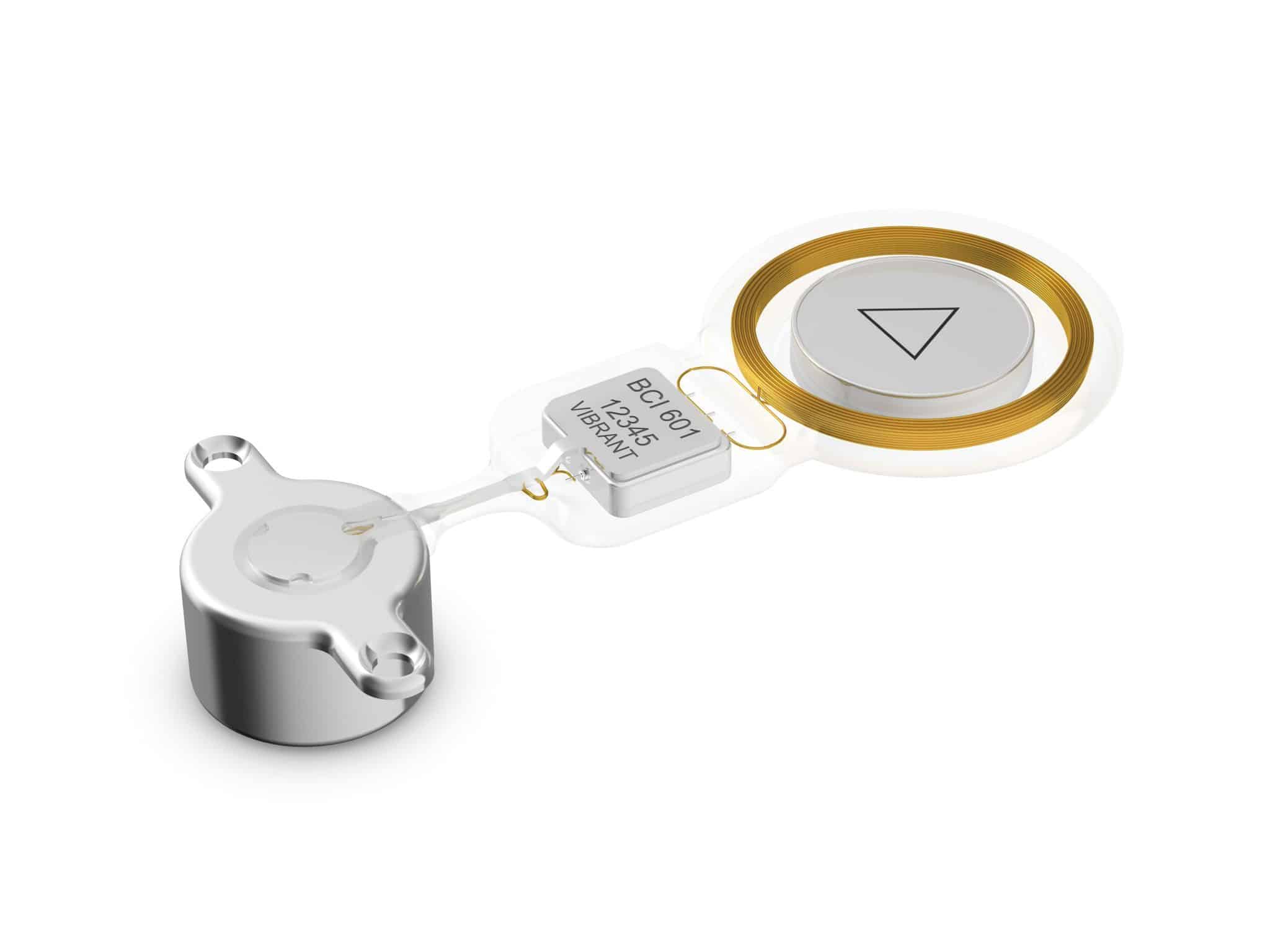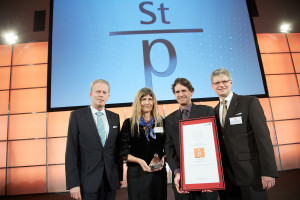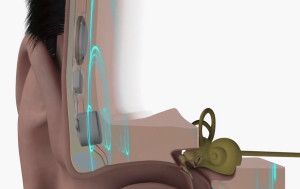MED-EL
Published Mar 28, 2014
What Makes the BONEBRIDGE So Special?

Yesterday, we were excited to learn that MED-EL was awarded the Austrian Innovation Award 2014 for our BONEBRIDGE bone conduction implant. If you’ve never heard of the BONEBRIDGE, you might wonder what it is–and what makes it so innovative. Well, the answer is both short and long. The quick answer is that it’s the first active bone conduction system in the world. The long answer starts with the questions: what’s bone conduction, how does it work, and what is an active bone conduction implant?

Dr. Reinhold Mitterlehner, Austrian Federal Minister, awards the Innovation Prize to MED-EL. From left-to-right: Mitterlehner; Ingeborg Hochmair, MED-EL CEO; Peter Lampacher, VIBRANT MED-EL; Marcus Schmidt VIBRANT MED-EL. (Credit: BM für Wissenschaft, Forschung und Wirtschaft/APA-Fotoservice/Preiss)
Bone Conduction
Bone conduction is sending sound information through the bones in your head so that it reaches your inner ear. It’s one of the two natural ways that the cochlea can receive sound, the other being air conduction. In a hearing test there will often be two separate sections, one for air conduction and one for bone conduction. Since the BONEBRIDGE focuses on bone conduction, that’s what we’ll talk about here.
A bone conduction implant (BCI) then is an implant that helps an individual to hear through bone conduction. In all cases, BCIs do this by mechanically vibrating the bones of the skull. But don’t worry if the thought of shaking these bones worries you, because the vibrations are really, really tiny. So tiny, in fact, that you won’t be able to feel them.
In fact, if you’ve ever wondered what bone conduction feels like you can test it out right now: just cover your ears and speak out loud! See how you’re still able to hear your own voice, even with your ears covered? That’s because the vibrations of your speaking voice are sent through your head and some of them are perceived by your cochlea. Of course, this isn’t what it sounds like to hear with a BCI, but it’s a good example of the principle of bone conduction.
Active Versus Passive
The one word “active” shows where BONEBRIDGE really shines. “Active” means that the part of the Bonebridge that vibrates the bones, called the BC-FMT, is implanted directly within the bone. This allows the Bonebridge to be transcutaneous, so that the skin remains intact, unlike other bone conduction devices such as bone-anchored hearing aids (BAHA) where the external sound processor sends vibrations to a screw that protrudes from the skull. Passive bone conduction systems are also transcutaneous but instead of stimulating the bone directly they vibrate the skin from the outside, which reduces the loudness and quality of sound.
Transcutaneous technology might be familiar to recipients of cochlear implants but it’s still not widespread within the field of BCIs. With Bonebridge, the only transcutaneous BCI, the audio processor sends the sound information through the skin in the form of electrical signals and these are received by the implant which turns them into mechanical vibrations.
The BONEBRIDGE BCI is designed for mixed or conductive hearing losses, or Single-Sided Deafness. If you’re curious to learn more about the Bonebridge and if it is right for you (or a loved one), why not contact your local ENT clinic or MED-EL representative?
(The BONEBRIDGE may not be approved or available in your area. For more information about MED-EL products available to you please contact your local MED-EL representative.)
Reference
- Huber et al. (2013) The Bonebridge: Preclinical evaluation of a new transcutaneously-activated bone anchored hearing device, Hearing Research; 301: 93-99.
MED-EL
Was this article helpful?
Thanks for your feedback.
Sign up for newsletter below for more.
Thanks for your feedback.
Please leave your message below.
Thanks for your message. We will reply as soon as possible.
Send us a message
Field is required
John Doe
Field is required
name@mail.com
Field is required
What do you think?
© MED-EL Medical Electronics. All rights reserved. The content on this website is for general informational purposes only and should not be taken as medical advice. Contact your doctor or hearing specialist to learn what type of hearing solution suits your specific needs. Not all products, features, or indications are approved in all countries.
MED-EL



